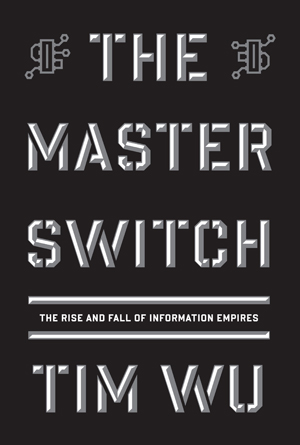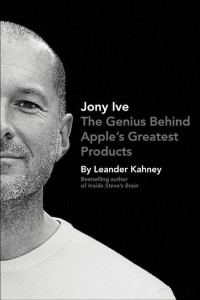 You develop a useful product. Let’s say its a needle for performing biopsies. You file a patent application on your invention.
You develop a useful product. Let’s say its a needle for performing biopsies. You file a patent application on your invention.
Then you approach a medical device company and enter into a license agreement where the company receives exclusive rights in the invention in exchange for a royalty on each product sold.
Years pass and the company still has not fully developed and marketed the invention. You sue the company for not doing enough to get your product to market. But you lose because the license agreement contained no performance guarantees requiring the company to meet minimum sales or use best efforts to make, market, and sell the product.
This is similar to what happened in the case of Beraha v. Baxter Health Care Corporation, 956 F. 2d 1436 (7th Cir. 1992).
Don’t Rely on Oral Assurance as a Substitute for a Performance Guarantee
The Beraha case demonstrates that one of the most important terms in licensing your invention or product is a performance guarantee. A performance guarantee protects you if the other party (the “licensee”) buries your invention or does not do enough to market or sell it.
In the Beraha case, Beraha originally proposed a license agreement that contained a guaranteed minimum annual royalty of $50,000 per year after the first year. However, Baxter responded with a proposal that eliminated the guaranteed minimum annual royalty and increased the royalty advance to offset the removal of the minimum guarantee.
At first Beraha refused to sign the revised proposal from Baxter because it did not contain a minimum guarantee or a best efforts clause. However, during a phone call with a Baxter Vice President and without committing to any specific level of effort, the VP said he would send Beraha a letter . On the basis of the assurance that a letter would be coming, Beraha signed the exclusive license with Baxter, which contained no performance  guarantees.
The letter Beraha later received said “…Although we work in an environment that is always subject to changing conditions, you can be assured that our present intent is to do our very best to make this project a success…” However, this letter had no effect on the license agreement that was already signed. This is due in part because the license had a merger clause. Most license agreements have a merger clause, which basically says that “no matter what I said before, the only terms that matter are the terms written in this license agreement.”
The court found that Beraha could not inject a best efforts clause into the agreement when it did not provide one and when the minimum sales provision was removed during negotiation.
The court left open a possibility that Beraha could recover if it could show that Baxter breached its obligation to act in good faith and fair dealing. But, there’s no surety that Beraha could recover under that theory because the court said, “the jury could find that Baxter did not breach the contract even if it exerted no efforts at all to develop the Beraha needle if Baxter can show that its decision to exert no effort was reasonable under the circumstances.”
You do not want this to happen to you. Therefore, your license agreements should have a performance guarantee. Performance guarantees come in several forms.
Minimum Sales Requirement
The best approach is to provide a clause that requires the other party (the licensee) to hit minimum sales in a defined period of time. For example, as in the first proposed agreement in the Beraha case, the minimum can be in the form of a guaranteed minimum annual royalty payment. This requires that no matter what the sales are during a given period, the other party must pay at least the minimum during that period. If the guarantee is $50,000 per year, then you are guaranteed at least that amount even if the unit sale royalties do not reach that amount.
Also you can provide the guarantee in units of product. So you can say that the annual minimum unit sales is 50,000 units. If the royalty rate is three percent of the net sale price, and you know the net sale price, then you can calculate the annual minimum in dollars.
Consequences if Minimums are not Met
What happens if the minimums are not met?
If the license provides that you are paid the minimum no matter what the sales are maybe you don’t care if target sales are not met. However, if you want to see your product succeed in the marketplace you might want to provide a provision that cuts off some or all of the licensee’s rights if the minimums are not met.
One example is a license that provides for termination if the minimums are not met for one or more periods. When the license terminates you can approach other companies to make and/or sell your product. Another option, is that an exclusive license can be converted to a non-exclusive license if the minimums are not met. This means that the first licensee can continue to mark and/ sell your product, but that you can go to other companies and have them make or sell your product as well. When the agreement is non-exclusive you can cut deals with multiple companies to sell your product.
Best Efforts
One alternative to defining the minimum dollars or units per period, is a license that provides this: “the licensee agrees to use its best commercial efforts to make, market and sell the product.” Sometimes “reasonable” is substituted for “best”. Regardless, see how wishy-washy that phrase is? What does “best/reasonable commercial efforts” mean? How will it be measured? A best efforts clause is an invitation for a dispute (e.g. a lawsuit) because it is uncertain what best commercial efforts means.
It is better to specify what activities are desired, such as minimum sales, a list of marketing activities, and/or other requirements.
Do not rely on oral assurances that the licensee will use their best efforts to make, market, and sell your invention or product. Put concrete numbers and activity requirements in a product or invention license.
Photo credit to John Walker under this creative commons license. The image above is cropped in from the original photo here.
 No successful boy ever saved any money . . . They spent it as fast as they could for things to improve themselves.
No successful boy ever saved any money . . . They spent it as fast as they could for things to improve themselves.
 “If you can develop technology that’s simply too hard for competitors to duplicate, you don’t need to rely on other defenses. Start by picking a hard problem, and then at every decision point, take the harder choice.” – Paul Graham
“If you can develop technology that’s simply too hard for competitors to duplicate, you don’t need to rely on other defenses. Start by picking a hard problem, and then at every decision point, take the harder choice.” – Paul Graham

